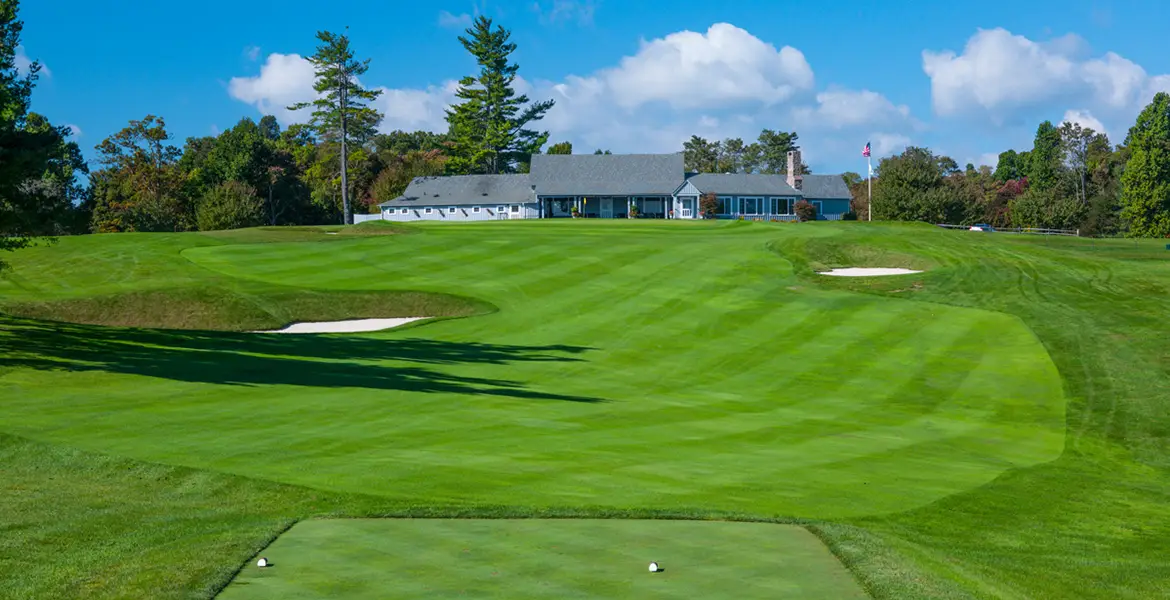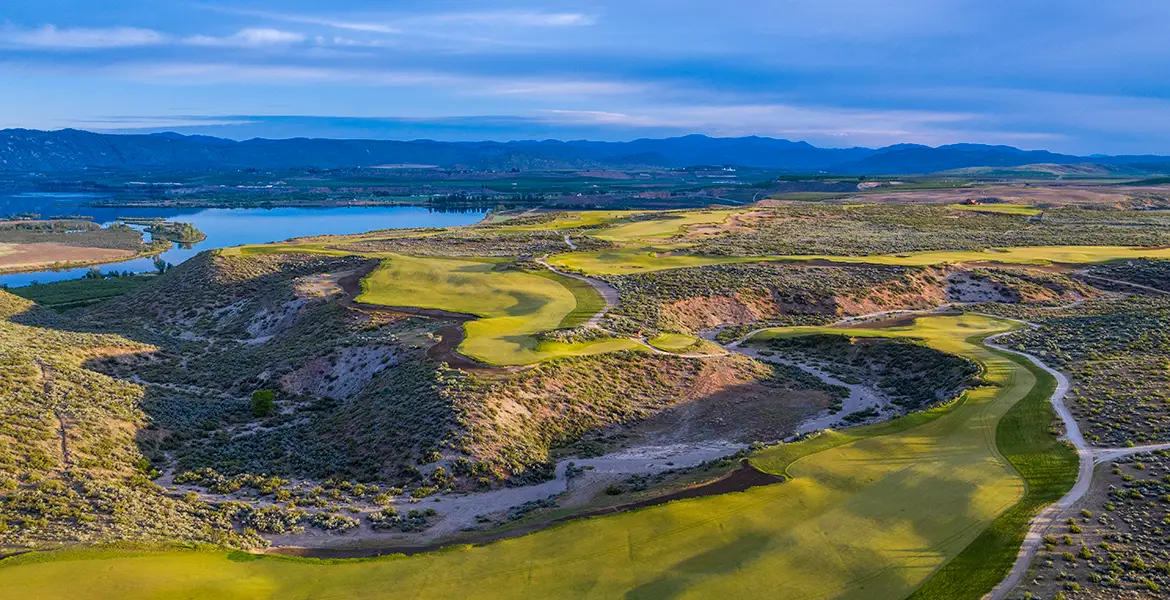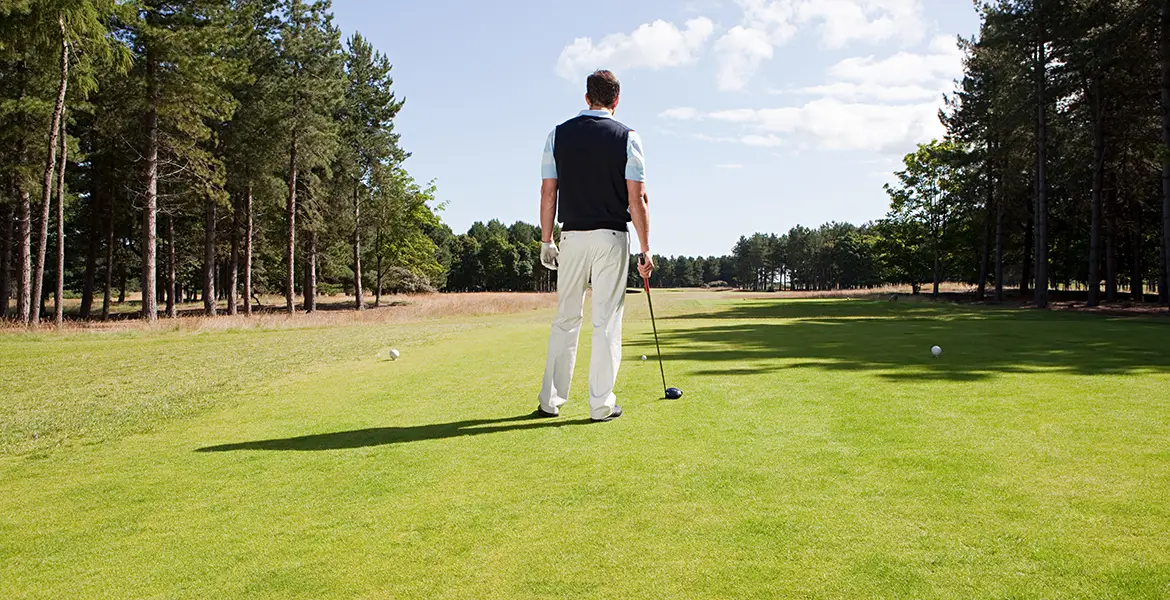Few pursuits have as many arcane rules as the game of golf. Did you know, for example, that you can play a shot from within a clubhouse (if it’s not out of bounds), and even open a window or door to facilitate such a shot? The Rules say that you can. They say a lot of other things, too—including a few things that I think golf’s governing bodies, the USGA and R&A, should consider revising.
I do not suggest that foot-wedge shots should be made legal, as one golf enthusiast that I know suggested. But I do think there are a few Rules that, in the interest of fairness and promoting a faster pace of play, could be modified. Here are 10 suggestions to get the discussion started.
1. Limit of 14 Clubs
USGA Rule 4.1b(1) limits a player to using no more than 14 clubs. It can be argued that no player should need more than 14 clubs—and that learning how to craft shots using fewer than 14 might even make someone a better player. But the decision should be left to the individual golfer. If players can increase their enjoyment of the game by carrying 15 or more clubs, they should be allowed to. Would this create an unfair situation in competition play? Not if the same opportunity is given to every player. And using more than 14 clubs might not even necessarily be an advantage; the more clubs a player carries, the more difficult it may be to master them all or choose between them in a given situation. So in the end, deciding on the optimal mix of clubs to carry could add a strategic element to the game that only exists to a lesser degree today.
2. Relief from Divots
The Rules of Golf grant relief from many kinds of abnormal ground conditions—including Rule 13.1c(2), which allows a player to repair ball marks and spike marks on putting surfaces—two kinds of alternations made to the course by other players. The rules look to strike a balance between the longstanding tradition of playing the ball “as it lies” and fairness, and in the case of this rule, they indicate that on greens, such relief is warranted. But no such relief is offered in the case of a ball coming to rest in a divot, which is manifestly inconsistent. Relief should be granted from divots (and sand-filled divots), assuming that there is consensus agreement that the ball does, in fact, lay in a divot.
3. Relief in Bunkers
There’s nothing worse than hitting into a bunker and finding your ball nestled at the bottom of some prior player’s unraked footprint, or one of the canyons created by another player’s attempts to escape the sand. Purists will cite this as another example of “rub of the green,” and note that hazards are meant to be hazards. In other words, it’s your own fault if you hit it there. But again, this is manifestly unfair. Golf’s not meant to be fair, some may say—and there are plenty of naturally occurring situations in which it rightfully is not. But the sad truth is, many players do not take time to rake bunkers before moving on, and the result is an unnatural condition that makes golf not just less fair, but less fun. Relief is granted in bunkers from casual water; it should be granted in the case of thoughtless players, too. The rules should allow for players to place the ball at the point of nearest relief, no closer to the hole, with one exception: If a player fails to extricate a ball from a bunker and it rolls back into his own footprints, there should be no relief. That’s a mess of his or her own making, and therefore not unnatural.
4. Stroke and Distance Penalty for Loss of Ball or Ball Hit Out of Bounds
Rules 18.2a(1) and (2) cover balls that are lost or hit out of bounds. Players have three minutes to search for and find wayward balls or they must be declared lost or O.B., at which point the player must take stroke-and-distance relief by adding one penalty stroke and playing their next shot from the place where the previous stroke was made. The rules do allow a player to have declared and played a provisional ball, but the stroke-and-distance penalty still applies. Few people have ever liked this rule, both because it seems like an unduly harsh penalty compared to others but also because it can adversely affect pace of play. The USGA has identified an optional local rule that allows a player to, “for two penalty strokes,” “estimate the spot where your ball is lost or went out of bounds and then find the nearest fairway edge that is not nearer the hole than the estimated spot. You can drop a ball in the fairway within two club-lengths of that fairway edge point, or anywhere between there and the estimated spot where your ball is lost or went out of bounds.” This is a helpful local rule when and where it is applied. But in effect, while you are only penalized one stroke for a ball hit into a penalty area, you’re penalized two shots for lost balls and shots hit O.B. The rules should be modified to provide the option in both cases of taking a one-stroke penalty, with the next shot being played within two club-lengths of the position at which the player is most likely to have lost a ball or gone out of bounds.
5. Three-Minute Time Limit to Find a Lost Ball
Rule 18.2a(1) dictates that a ball is lost if it cannot be found within three minutes after a player or their caddie begins to search for it. Players used to be allowed five minutes before this changed in 2019, and let’s face it, most recreational players will still take five minutes (or more) to find a wayward pellet. Given the severe penalty for a lost ball, this is understandable. Three minutes may be perfect for preparing a soft-boiled egg, but it’s not a fair amount of time to try to avoid a stroke-and-distance penalty. It should be changed back to five minutes. The additional two minutes, even when multiplied by several ball searches over the course of a round, will not substantially affect the length of a round. There are other, fairer ways to combat slow play.
6. Ball Embedded by Someone Stepping on It
Rule 16.3a(2) specifies how and when a player is entitled to relief when a ball is embedded. If your ball is embedded in its own pitch mark in the General Area (fairway and rough), you’re entitled to relief. But this is not the case if “the ball is pushed into the ground by someone stepping on it.” Say what? Assuming that it can be established that someone pushed your ball into the ground, either accidentally or otherwise, relief should be granted. It’s certainly an unnatural condition. Nearest relief no closer to the hole plus one club-length would be appropriate.
7. Interference from Boundary Objects
The Rules of Golf normally provide relief from artificial objects, such as cart paths, buildings, or even stakes marking penalty areas. But if your ball comes to rest in bounds but in a position where the boundary fence interferes with your stance or swing, there is no relief. You must either play it as it lies, take a stroke and distance penalty and play again from the spot of your last stroke, or declare your ball unplayable. Why? Why should a shot hit that’s almost gone O.B. be penalized more than one hit near to, or even into, a penalty area? Nearest relief no closer to the hole plus one club-length should be provided in the case of boundary objects such as fences.
8. Use of Distance-Measuring Devices
In 2019, the USGA ruled that distance-measuring devices such as laser rangefinders were henceforth to be allowed. But it also noted that “the committee in charge of a competition does have the option of prohibiting the use of distance-measuring devices by local rule”—as the USGA itself does for some of its championships. You can even carry such devices if they have slope-reading functions, but you cannot use those functions—only the distance-measuring one. Allowing players to quickly and easily ascertain a yardage saves time and improves pace of play. But in many events, including PGA Tour events and three of the four majors, they’re still prohibited. Which leads to collective hours of unnecessary pacing off yardages and discussions between players and caddies. In 2021, the PGA Championship became the only major to allow them, and it makes sense. Why make players spend five minutes pacing and chatting and looking at yardage books forever when a simple click of a button can give a precise yardage? The player still must choose the right club for the shot and conditions and execute the shot—it’s not like judgment and skill aren’t still required.
9. Rules for Relief from Penalty Areas
Many players get confused when confronted with the options available to them after they’ve hit into a penalty area, partly because those options differ depending on which color area you’re in. Balls in a yellow area create two options: stroke-and-distance relief from the spot where the previous stroke was made; and back-on-the-line relief, which allows you to drop on a line extending back from the hole to the point your ball entered the hazard (and as far back from that point as you want). Red penalty areas add another option—lateral relief within a two club-length distance no closer to the hole. Since there could be situations where lateral relief (no closer to the hole) could be possible and advantageous from a yellow hazard, why not standardize the rules for both kinds of penalty areas and eliminate this potential confusion?
10. Pace of Play Rule
Rule 5.6b encourages prompt pace of play and states that “the player should make the stroke in no more than 40 seconds after they are (or should be) able to play without interference or distraction…” This is a good recommendation, but it has no teeth. The length of time it takes to play a round of golf limits participation in the game and makes it less fun for those who do play. Would it be fair to require, under penalty of one stroke, a player to play his next stroke with a ball in play (i.e. after finding a ball in the trees or making a drop) within 40 seconds? I think so.
What do you think of these suggestions? What golf rules would you change and why?







These rules and many more should be changed or eliminated. It should not take a book to contain all the rules for golf! They should fit on a 3” by 5” index card that players carry in their bag.
Make the game easier and more enjoyable for all.
Years ago golfers could carry many more than 14 clubs. Most golfers would play better with fewer clubs. Fewer choices will speed up the game, while forcing the player to learn to play shots.
Consensus agreement for divots? The Rules don’t and shouldn’t work that way. All the moaning about divots! Seriously, how often do most players ever find themselves in a divot and how difficult was the shot? Deal with it!
3 minutes search time is plenty. It’s been studied and balls are rarely found between minutes 3-5.
Ball stepped on…the Rules already allow relief under 8.1d.
Pace of play-I’m all for anything that will improve pace of play, but seriously, who will be doing this timing?
There is a reason some penalty areas are yellow!
Relief from boundary objects-interesting idea, should be considered.
Bunkers-this opens a can of worms!
Why does this article use the term hazard? They’ve been penalty areas for 5 years now.
Rule on divots should be changed. Anyone who disagrees probably doesn’t repair divots.
I’d change the rule for dropping your ball in a bunker so you don’t get a buried lie. I try to drop on a slope or a leaf so my ball doesn’t bury. Maybe you should just be able to place the ball?
Change the rule on divots!! It is not at all fair that a player should have to hit their ball out of a divot! Simply move it out of the divot an inch or so to either side!!
I agree. Two rules which allow you to impact the play of other players are the hitting out of footsteps in bunkers and having to hit out of a divot on the course. With these rules, it simply makes sense to not repair your divots or to leave your bunker shots unrated.
As a recreational golfer, I strongly agree in relief from divots! They are unnatural and usually caused by other players. All of these suggestions are excellent for improving pace of play and simplifying the game, which would attract more people to the game of golf.
Some good ideas. #’s 2,3,5,6,7,8,9 would be a good start to make golf more enjoyable for us amateurs. Why not have separate rules for recreational golfers vs pro golfers. I’m never going to go pro so I don’t have to remember both sets of rules, and neither would the pros. Make if more fun for the everyday golfer
Rules? What rules? The only rules are, there are no rules! A saloon brawl!
All of your proposed changes sounds reasonable, although I like #1 and #3 most. #4 is one where I think you can split between clearly OB and lost ball where the group playing feels it is so likely the ball is in the area in bounds, then you could do a one stroke penalty from the most likely place the ball was lost. Sometimes you find your ball in deep vegetation only by stepping on it
Couldn’t disagree more with all but one suggestion!! Next you’ll want the hand/foot wedge legalized!
No, no, no.
The Rules are what make the game.
Can’t deal with those rules? Don’t play golf. Go play tennis and have some hard server hit the ball past you and see how you feel when it hits the line and you tell him it’s out and you go argue with that dude!!!
There are Rules in Life. Do you go around breaking them all?
Get outta here. It’s the rough rules that make the game hard. The game is meant to be hard, not easy. If it’s that easy then you would not respect the score, because you didn’t know how to play by the Rules.
Huh, carrying 15 clubs; players on the whole do not carry any clubs!
Pace of play; enjoy the walk! Forego the electric golf cart capable of 30 MPH that delivers a false sense of pace of play!
A bunker should be penal not lethal. Play it as it lies and move the rakes totally. This will also speed up play
Life isn’t fair – deal with it. What next – relief for players who get the worst of the weather, fried egg lies in bunkers, are distracted by other players shouts on the course, car horn in back swing, ball sitting down in the rough, etc
On 2 through 9 agree completely except for 7.
On 7, how many golfers have ended up against the wall over the green on 17 on the Old Course at St. Andrews? Should they get relief? What would Old Tom Morris say? No, OB markers are like a boulder on the course. Play it as it lies or take an unplayable. For that matter, stop granting relief for hitting behind television towers and into temporary stands in tournaments. It’s not like they’re hidden from the players when they are making their shots.
On 1, maybe increase the bag to 15 or 16 for an extra wedge or hybrid, but it seems like a boon to the club manufacturers to make it unlimited.
On 10, 40 or 45 seconds seems reasonable for friendlies and club competitions. But what the playing public sees on TV on Saturday and Sunday influences how quickly they play. Allow tournament players a cumulative total of wait times over 18 holes from when they reach their ball. Make it reasonable to account for maybe two rulings and two ball searches, but give a one stroke penalty for each 5 minutes the player is over the cumulative limit at the end of the round. Players will speed up play in the early part of the round and for simple shots in order to build up a cushion for tricky situations. Soon they’ll find themselves playing quickly without even consulting the clock. No more endless gripping and regripping a la Sergio or intermittable confabs with caddies. Baseball, basketball, football and chess all have clocks, so do TV game shows. Golf can handle something with teeth.
Stroke and Distance relief is, actually, mentioned in the Rules of golf.
Model Local Rule E5, when in effect, allows for a relief other than stroke and distance.
Ball in divot. That has been cussed and discussed at length.
This will likely never change. Because, when do you define when a divot is no longer a divot?
When you can see blades of grass in the divot?
Once that grass has completely grown back?
That, in itself, is too subjective.
Relief in Penalty area. Yellow penalty areas are designed such that, once the ball is in the area, the option for side relief is eliminated. One is required to go back behind the area and play from that point.
Time to find a lost ball. The time was reduced, because there was so many complaints regarding slow play.
Limit of 14 clubs. Let’s all show up like we just watched Caddyshack
Continuous putting speeds play.